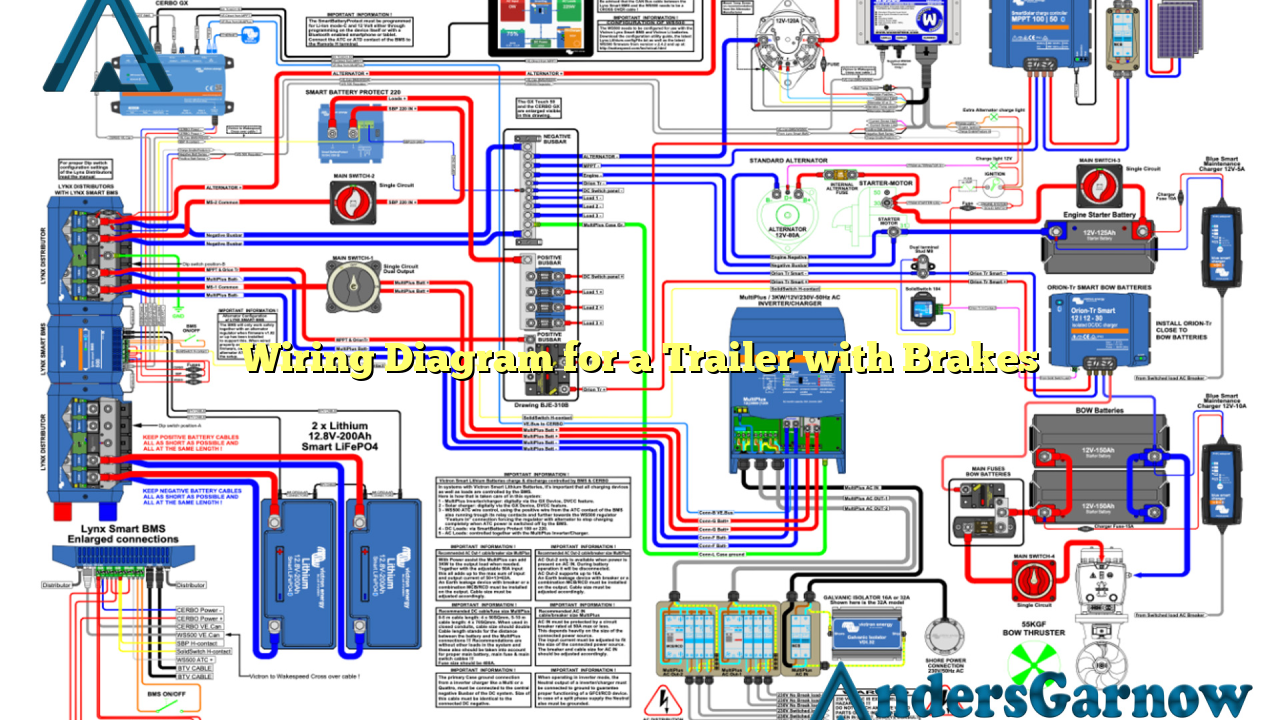Hello and welcome to our comprehensive guide on wiring diagrams for a trailer with brakes. If you are a trailer owner or planning to purchase one, understanding the wiring system is crucial for a safe and efficient towing experience. In this article, we will provide you with detailed information on how to wire your trailer with brakes, discussing various aspects, including the advantages, disadvantages, and alternative options. So, let’s dive in!
1. Understanding the Basics
Before we delve into the wiring diagram, let’s start with the basics. A trailer with brakes requires a separate wiring system to ensure that the trailer’s brakes synchronize with the towing vehicle’s braking system. This system involves connecting the trailer’s brakes, brake lights, and turn signals to the towing vehicle for proper functionality.
2. The Wiring Diagram
Here is a detailed wiring diagram for a trailer with brakes:
| Wire Color | Function |
|---|---|
| White | Ground |
| Brown | Taillights |
| Yellow | Left Turn Signal & Brake |
| Green | Right Turn Signal & Brake |
| Blue | Electric Brakes |
In this wiring diagram, the white wire represents the ground connection, the brown wire connects to the taillights, the yellow wire connects to the left turn signal and brake lights, the green wire connects to the right turn signal and brake lights, and the blue wire connects to the electric brakes.
3. Advantages of Wiring a Trailer with Brakes
Wiring your trailer with brakes offers several advantages:
- Enhanced Safety: The trailer’s brakes help in reducing stopping distances, ensuring safer towing.
- Improved Control: With synchronized braking, you have better control over the trailer, especially during sudden stops.
- Legal Compliance: Many states and jurisdictions require trailers with a certain weight to have brakes installed.
4. Disadvantages of Wiring a Trailer with Brakes
Despite the advantages, there are a few disadvantages to consider:
- Cost: The installation of a brake system can be expensive, including the purchase of brake controllers and related components.
- Maintenance: The brake system requires regular maintenance and inspections to ensure proper functioning.
- Complexity: The wiring process can be complex, especially for individuals with limited electrical knowledge.
5. Alternative Options
If wiring your trailer with brakes seems too complicated or costly, you can consider alternative options:
- Electric Brake Controllers: Electric brake controllers can be installed in the towing vehicle to control the trailer’s brakes without the need for separate wiring.
- Surge Brakes: Surge brakes are hydraulic systems that activate the trailer’s brakes when the towing vehicle slows down or stops, eliminating the need for electrical connections.
Conclusion
In conclusion, wiring your trailer with brakes is a crucial aspect of safe and efficient towing. Understanding the wiring diagram and following the installation process is essential to ensure proper synchronization between the trailer and towing vehicle. While there are advantages to having brakes, it’s important to consider the associated costs, maintenance, and complexity. Alternatively, electric brake controllers and surge brakes provide viable options for individuals seeking simpler solutions. We hope this article has provided valuable insights into wiring diagrams for trailers with brakes. Safe travels!
FAQ
Q: Can I install the wiring system myself?
A: If you have experience and knowledge of electrical systems, you can install the wiring system yourself. However, it is recommended to seek professional assistance to ensure proper installation and avoid any safety risks.
Q: How often should I inspect the trailer’s brake system?
A: It is recommended to inspect the trailer’s brake system before every trip and have it professionally inspected at least once a year to ensure optimal performance and safety.
Q: Are there any legal requirements for trailers to have brakes?
A: Legal requirements vary by jurisdiction. It is essential to familiarize yourself with your local laws and regulations regarding trailer brakes to ensure compliance.

